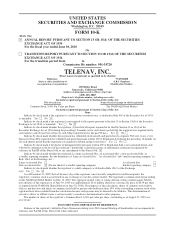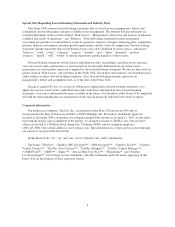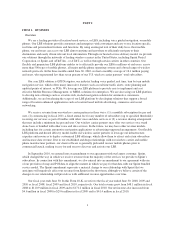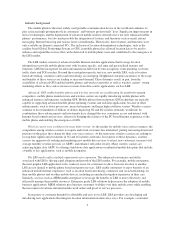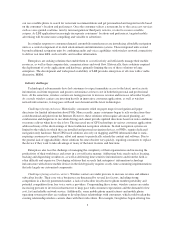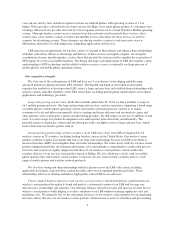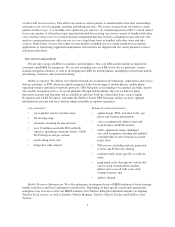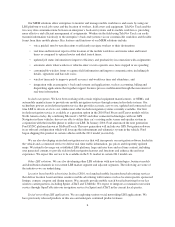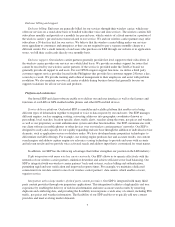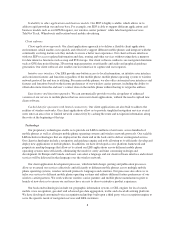TeleNav 2010 Annual Report Download - page 11
Download and view the complete annual report
Please find page 11 of the 2010 TeleNav annual report below. You can navigate through the pages in the report by either clicking on the pages listed below, or by using the keyword search tool below to find specific information within the annual report.Scalability to other applications and business models. Our SDP is highly scalable, which allows us to
address rapid growth in our end user base. For example, our SDP is able to support different applications and
business models such as our GPS Navigator, our wireless carrier partners’ white label navigation services,
TeleNav Track, Whereboutz and location based mobile advertising.
Client software
Client application approach. Our client application approach is to deliver a flexible client application
environment, which enables us to quickly and effectively support different mobile phones and integrate with the
continually evolving feature sets they include to create a better user experience. Our client software interfaces
with our SDP to access updated information and data, routing and other services without using device memory
for data intensive functions such as map and POI storage. Our client software conducts core navigation functions
such as GPS data noise filtering, 3D moving map generation, user friendly and audio and graphical guidance
generation. Our client software also enables our user interface to capture end user requests.
Intuitive user interface. Our LBS provide one-button access to local information, an intuitive user interface
and consistent features and functions regardless of the mobile phone, mobile phone operating system or wireless
network protocol the end user is utilizing. For many mobile phones, we also offer customized user interfaces and
features and functions based on the feature preferences of our wireless carrier partners, including the ability to
obtain directions from the end user’s contact data on the mobile phone without having to retype the address.
Easy feature and functions upgrades. We can automatically provide over the air updates of enhanced
versions of our service to mobile phones that use our recent client applications, without the need to upload new
client software.
Cached data for operation with limited connectivity. Our client applications are also built to address the
realities of wireless networks. Our client applications allow us to provide simplified navigation services even if
users enter an area of no or limited network connectivity by caching the route and navigation information along
the route at the beginning of the trip.
Technology
Our proprietary technologies enable us to provide our LBS to millions of end users, across hundreds of
mobile phones as well as all major mobile phone operating systems and wireless network protocols. Our scalable
LBS includes technologies that are deployed on the client and in the back-end to deliver an integrated service.
Our client technologies include a navigation and guidance engine and tools allowing us to efficiently develop and
deploy new applications to mobile phones. In addition, we have developed a cross platform framework and
proprietary markup language that allow us to extend our LBS applications across different mobile phone
operating systems more efficiently, eliminating the need for costly and time consuming redesign and
development. In Europe and Canada, end users can select a language and our client software interface and related
services will be delivered in that language over the wireless network.
Our client application development processes, which include design, porting and publication processes,
allow us to extend our services effectively and efficiently to different mobile phones across multiple mobile
phone operating systems, wireless network protocols, languages and countries. Our processes also allow us to
tailor our services to different mobile phone operating systems and address different feature preferences of our
wireless carrier partners. We work with our wireless carrier partners and mobile phone manufacturers prior to
launch of new devices to ensure our end users have an easy to discover intuitive product experience.
Our back-end technologies include our geographic information system, or GIS, engines for local search,
mobile voice recognition, geo alert and advanced geo data aggregation, traffic and a local advertising platform.
We have developed customized voice recognition technology built upon a third party voice recognition engine to
serve the specific needs of navigation services and LBS customers.
8

